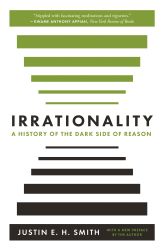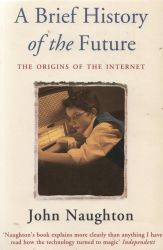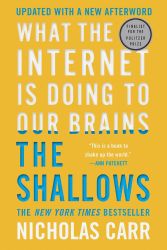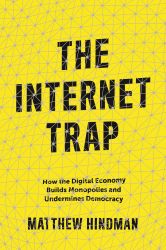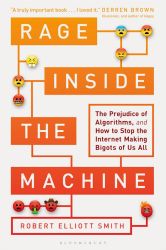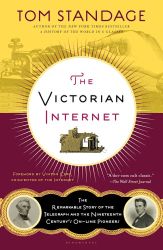7-minute read
keywords: history of technology, philosophy
It is tempting to think of the internet as a revolutionary and transformative tool. But neither is really true, contends professor of history and philosophy of science Justin E.H. Smith. In The Internet Is Not What You Think It Is, he argues that the idea has been in the air for centuries and that the lofty aspirations and dreams of its founders—that it would improve society—have died. Some of the observations here are absolute gems, though you will have to follow Smith through some diversions to get to them. Unfortunately, the book leaves the reader hanging at the end and does not deliver on some of its promises.
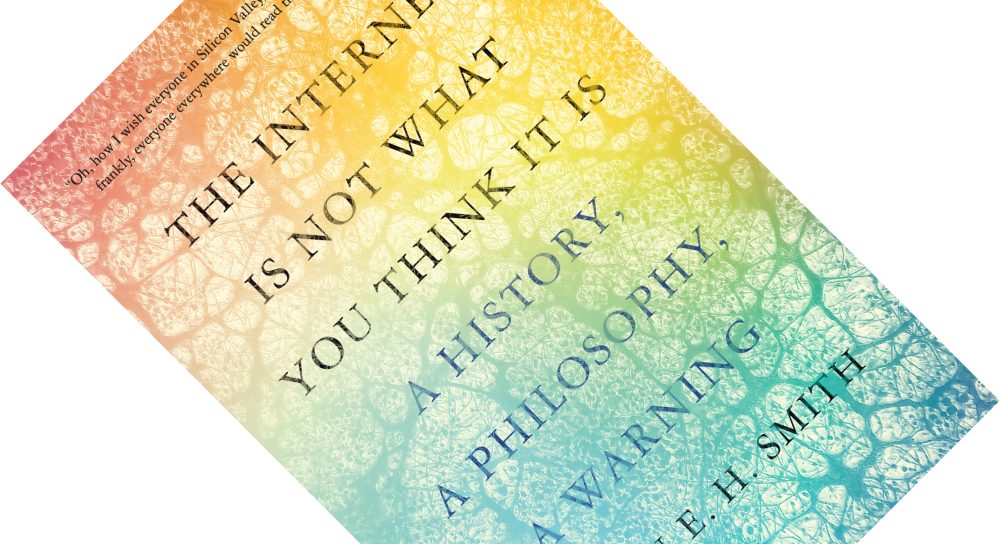
The Internet Is Not What You Think It Is: A History, a Philosophy, a Warning, written by Justin E.H. Smith, published by Princeton University Press in May 2022 (hardback, 195 pages)
Smith hinted at the long prehistory of the internet in Irrationality, a book I enjoyed. Here, he delivers on that promise. As before, his writing can be a bit convoluted but is never impenetrable. Readers are advised, however, that this book is decidedly not a history of how the internet was invented and initially lived as the ARPANET. For that, you should turn to e.g. A Brief History of the Future and the somewhat older Where Wizards Stay Up Late. Judging by some of the negative reviews I have seen, a number of people came to this book with that expectation, in which case The Internet Is Not What You Think It Is is, well, not what you think it is. Let us take a closer look at what he delivers instead.
Smith opens with a searing critique. The lofty hopes and ambitions behind the internet—that with endless information at our fingertips and the ability to connect to anyone, anywhere, we would create a better world—have been crushed by social media’s rise to dominance over the last decade. To some extent, he joins the chorus of recent social commentaries that point out the price of constant connection: how it is addictive, erodes deep thought, undermines business and politics, turns us into bigots, and has made a business model out of mining the natural resource that is your attention.
But Smith goes well beyond moral panic and points out that not all of this is new. Books and the printing press were already condemned for eroding the art of memorising information, while one 17th-century writer complained of being distracted by trivialities such as books, maps, and letters. What is different is that the internet is “explicitly designed to prod the would-be attender ever onward from one monetizable object to the next” (p. 38), thus thwarting sustained attention. There is no interest here in conflict resolution or collective deliberation, “social media are in this respect engines of perpetual disagreement” (p. 52). Our online interactions have turned into an existential game that rewards us with “likes”, “shares”, or some other virtual currency. Often without realising it, we are using “what is essentially a privately owned point-scoring video game as if it were the public sphere” (p. 54). And this algorithmically-driven way of thinking has spilt back into our society and politics.
“Some of the observations here are absolute gems, though you will have to follow Smith through some diversions to get to them.”
There is nothing intrinsically wrong with the technology, adds Smith. This failure is more likely explained by the underlying economic model. In other words, it is not the tool that is faulty, it is the wielder. Smith is convinced that a historical investigation into the origins and development of the internet could help us improve it and the rest of the book ponders how things got to be this way. Spoiler alert: “Things got this way as a cumulative effect of our simply doing what we have always done” (p. 56). Or to put it more bluntly: it is the humans that suck. This echoes what Mark Manson has written as a revision of his earlier thinking about social media.
What follows are four chapters that detour into related fields to various degrees. Smith is at his most convincing when he shows how long the idea of telecommunication was in the air before it became a reality with e.g. semaphore or the telegraph. Earlier still, archaeological evidence shows that we had long-distance networks of exchange that “reach as far back in human prehistory as we might wish to go” (p. 77). The late-adopter problem—the idea that we only recently invented something that other organisms do naturally—falls apart in Smith’s hands. And one might even wish to extend this further and question the distinction between natural and artificial. By that line of reasoning, our technologies “are only the concretions of a certain kind of natural activity in which human beings have been engaging all along [and] is only one more recent layer of the ecology of the planet as a whole” (p. 84); a planet rich in communication networks between animals, plants, fungi, and other organisms.
The real detours start in subsequent chapters where Smith considers the history of computing more generally. Though he admits he strays quite far from his principal concern with the internet, he contends that the two cannot be easily separated and that their histories are intimately entangled. This sees Smith wrangle with various philosophical questions. Is intentionality built into the internet? He thinks meaning only appears in the mind of the users at the terminal points of the network. Are we approaching the threshold where AI will become capable of conscious understanding? He warns tech enthusiasts that “calculating is not thinking” (p. 106). And does the mind work like a computer? He argues this metaphor is only the latest in a long line of explanations that instead reveal the dominant or fashionable technology of the era.
“Perhaps, Smith argues, technological progress does not provide us with new experiences, perhaps it just provides “ever new ways of activating the sort of experience we as human beings have always had“”
Furthermore, Smith discusses devices both imagined and real. Examples of the former are Roger Bacon’s Brazen Head which would answer yes/no questions and Semyov Korsakov’s ideoscope which was to be a mechanical memory. Examples of the latter are Charles Babbage’s Difference Engine and Analytical Engine, but especially Joseph Marie Jacquard’s automated loom that was programmable with punched cards and could be considered a 3D-printer avant la lettre. Computer technology owes a debt to weaving technology and the metaphors of fabric and threads are particularly persistent whenever thinkers have envisioned action at a distance. Smith suggests some metaphors are so powerful that they can literally take shape: “manners of speaking become manners of world-building” (p. 149).
A final chapter praises Wikipedia as a rare example of a web initiative that has not been corrupted and asks how much difference there is between the mental travel allowed by browsing the internet versus reading a book or telling stories around a fire. Perhaps, Smith argues, technological progress does not provide us with new experiences, perhaps it just provides “ever new ways of activating the sort of experience we as human beings have always had” (p. 166).
Unfortunately, Smith ends here, leaving the reader hanging in my opinion. I missed a final chapter that tied together all his philosophical wanderings and circled back to the opening gambit. Although he delivers on the promise of telling us, with some detours, what the internet is and where it came from, he does not deliver on the promise of where it will go or how his historical understanding might address the problems he so explicitly highlighted at the start. Overall then, The Internet Is Not What You Think It Is asks for a bit of buy-in from its readers. As I hope to have shown with the above quotes, there are some gems to be found if you are willing to accompany Smith, but I can see how the book might not satisfy everyone and leave some readers befuddled.
Disclosure: The publisher provided a review copy of this book. The opinion expressed here is my own, however.
 The Internet Is Not What You Think It Is
The Internet Is Not What You Think It Is
Other recommended books mentioned in this review:
__________________________________________________________________
__________________________________________________________________
__________________________________________________________________

